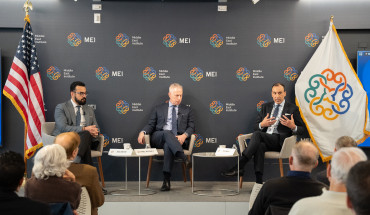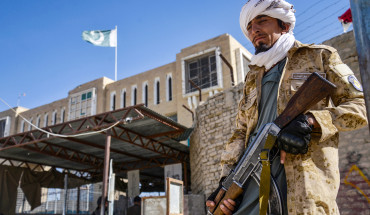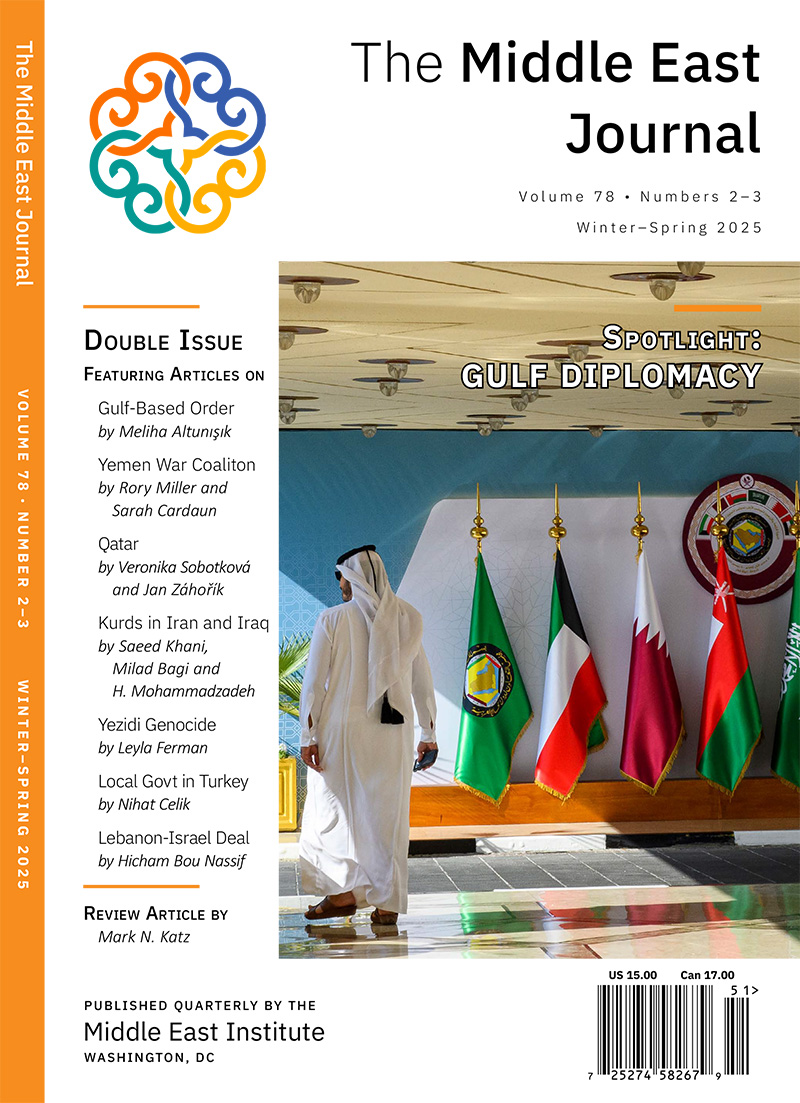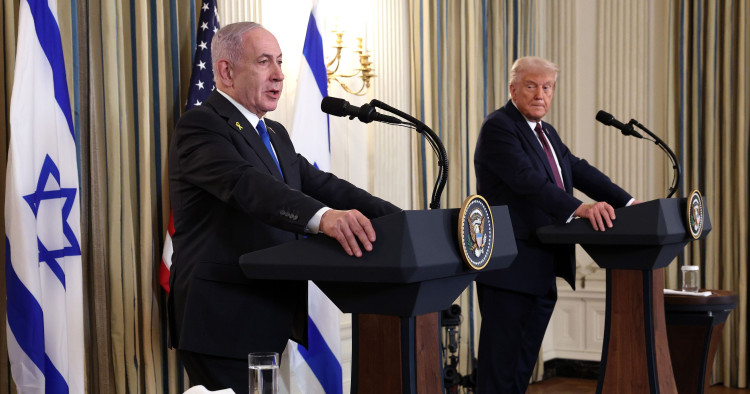After two terrible years — beginning on the horrific morning of October 7, 2023 — there is now a chance this war could end, at least temporarily. Hostages could return home, aid could flow into Gaza, reconstruction efforts could start to take shape, and lives and societies could start to mend.
This chance exists not because the 20-point proposal released by the United States on September 29, 2025, is a model of diplomatic detail or nuance. It exists because its patron, President Donald Trump, appears determined not to take “no” for an answer — meaning he is willing to interpret almost any answer as a “yes,” regardless of its content or intent. If, in the past, negotiators crafted vague bridging proposals to allow both sides to say “yes,” now the parties are crafting vague “yes, but” responses to allow the US administration to claim, and perhaps even produce, a success: a partial, messy, disingenuous one, yet nonetheless vital end to this historic round of violence.
Constructive ambiguity has long had pride of place in Middle East diplomacy. United Nations Security Council Resolution 242, for example — the “land for peace” resolution after the 1967 war — was designed to let each side read its own meaning into the text. It demanded that Arab states accept Israel’s right to “live in peace,” with “respect for [...] the sovereignty, territorial integrity, and political independence of every State,” and called on Israel to withdraw from territory it had occupied. Yet while the English version required withdrawal “from territories occupied in the recent conflict,” the French version said “des territoires” (“from the territories”). Each side could thus decide for itself whether the resolution meant full withdrawal, as the Arab states held, or a one of negotiated scope, as Israel insisted.
The Trump administration’s plan to end the Israel-Hamas war flips that formula. Its 20 points are sweeping and bold: all Israeli hostages, living and deceased, are to be released “within 72 hours,” along with 250 Palestinian prisoners serving life sentences for murder. “Hamas members who commit to peaceful co-existence and to decommission their weapons will be given amnesty,” while others will be allowed to leave the Gaza Strip. Aid will flow freely to address the humanitarian crisis. An international authority and security force will govern and rebuild Gaza as Israel withdraws. “Gaza will be a deradicalized terror-free zone…” and so on.
Israeli Prime Minister Benjamin Netanyahu, a master of the “yes, but,” said he accepted the plan. Yet he and nearly all Israelis expect Hamas will not surrender all its weapons, preserving its ability to resume at least guerrilla warfare while it rebuilds greater capabilities to attack Israel or Israelis. Having secured language tying Israeli withdrawal to milestones “linked to demilitarization,” Netanyahu is effectively agreeing to a full hostage deal that likely leaves Hamas standing in Gaza — but with Israeli forces still positioned to fight it. An end to this war, yes, but only to this round of it.
Hamas also "accepted” the plan and declared that it “valued” the efforts of mediators, naming Trump specifically. Yet its acceptance contradicted the proposal itself: Gaza, Hamas insisted, should be governed by “an independent Palestinian administration (a technocratic authority),” not an international one. It would be in the context of a “unanimous Palestinian stance,” meaning Hamas would hold a veto. That is far from point 13, which stipulates that “Hamas and other factions agree to not have any role in the governance of Gaza, directly, indirectly, or in any form.” The Hamas statement made no mention of decommissioning its weapons, a focus of follow-up negotiations. Indeed, the group is highly unlikely to relinquish all arms of all types having refused to do so for two harrowing years, despite the consequences.
The plan is unambiguous, if broad; the responses are anything but. Yet those responses allowed Trump to declare success: “Based on the statement just issued by Hamas, I believe they are ready for a lasting PEACE. … This is not about Gaza alone; this is about long-sought PEACE in the Middle East.”
Israel would realize one of its two main war aims — the hostages’ return — but see Hamas survive, contrary to its other main war aim. Hamas would achieve its own main goal — its survival — but may not see a full Israeli withdrawal. This raises the obvious question: if a deal could be reached now — still a big “if” — why could one not have been reached months, if not years, ago?
By merit, that sort of agreement should have been struck many months ago, sparing a sea of suffering. In diplomatic terms, however, the timing owes partly to pressure on Israel by its ally, the US, and on Hamas by several regional actors and especially its main Arab backer, Qatar. After Israel’s strike against Hamas leaders on Qatari soil, Doha secured a quasi-formal American promise of protection and an apology, of sorts, from a chastened Netanyahu in the White House. Qatar now has new vested interest in success. But that is only part of the story.
While Israel’s campaign in Gaza has been a strategic and moral failure, it has fared much better in its broader confrontations with Hizballah and Iran — its main adversaries for decades. If the war ended now, Netanyahu claim to Israeli voters that he succeeded in the larger struggle. More broadly, Israeli society is weary of the longest war in its history and prefers to end the war by a clear majority, prioritizing the fate of the hostages over Netanyahu’s promise of a “total victory” over Hamas, giving Netanyahu the political space to end the war if a deal is reached.
For Hamas, the beating it has suffered has diminished its capabilities dramatically, even if it continues to recruit heavily among Gaza’s youth. Facing further losses in Gaza City, it may have concluded it is best to play its hostages card now in the hopes of securing its survival.
Unfortunately, these calculations may prove fleeting. The parties are entering a process in which they have little genuine faith. Neither believes the intentions of the other side and cannot be persuaded otherwise.
In policy terms, this spells a cease-fire that may morph into a low-level guerrilla fight — stalling reconstruction, keeping civilians under threat, and allowing Hamas to continue to present itself as the central force in Palestinian politics, including in the West Bank. Israel, deeply risk-averse since October 7, is likely to respond aggressively to any sign of Hamas reorganization. The seeds of the next war are already visible. Mediators should resist the temptation to declare victory too soon or lose interest and move on.
Peace in the Middle East, as Trump envisions, is still far off. The ambiguity surrounding this plan points to a possible future in which Hamas remains on its feet, Israel remains deployed against it, and reconstruction remains in doubt.
Still, make no mistake: a cease-fire, even if partial, would be an extraordinarily good outcome at this time. A benefit, perhaps, of how dark these times are, is that any improvement could be momentous in terms of human lives saved and human welfare improved. If it takes some disingenuous-yet-constructive ambiguity to achieve it, so be it.
Natan Sachs is a Senior Fellow at the Middle East Institute.
Photo by Win McNamee/Getty Images
The Middle East Institute (MEI) is an independent, non-partisan, non-for-profit, educational organization. It does not engage in advocacy and its scholars’ opinions are their own. MEI welcomes financial donations, but retains sole editorial control over its work and its publications reflect only the authors’ views. For a listing of MEI donors, please click here.













